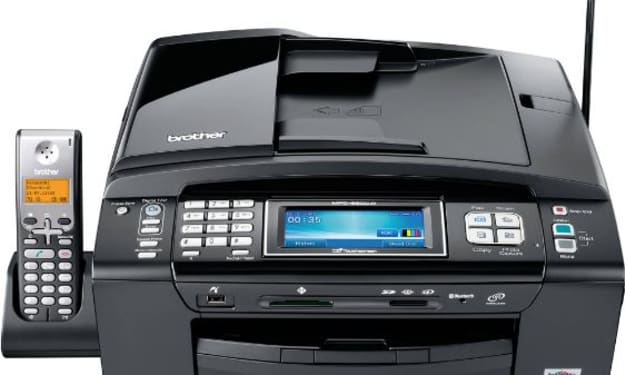Few Reasons That Your Laptop Won't Turn On
This article explains to you why your laptop not turning on after a sudden shutdown.

When a laptop fails to turn on, it's usually due to one or more reasons. First of all, the battery may be dead or the power brick may not be connected to a wall outlet. It's important to make sure that the power source is connected properly, and not simply to the power strip. If you're running out of juice and don't have the cord, try unplugging the battery and plugging it back in. Then, try turning on the laptop again.
If your laptop isn't turning on, even when connected, it could be due to an unreliable power supply or motherboard, battery or video card, or RAM. It's likely to be a power problem in the event that your laptop abruptly shuts down without warning. Check that your power supply is connected to an outlet as well as the computer. Examine the laptop's battery and power connector to ensure that the connection isn't loose. If everything is fine, it indicates there's a problem with the hardware. Overheating may be the reason for the system to shut down immediately. You must wait 10 minutes before cooling it down.
If you've tried pressing and holding the power button, but the laptop still doesn't turn on, it could be a hardware issue. Check the power cables and make sure they're correctly attached to the GPU. You should also check the primary drive by attaching it to the motherboard chipset SATA port. If these suggestions don't work, contact the manufacturer or find a local repair shop.
Other reasons why a laptop won't turn on include a faulty battery, a faulty power adapter, or a faulty component on the motherboard. It's important to check each of these items to rule out the possibility of a hardware problem and fix the problem. If you've already replaced these parts, a simple first-aid procedure may fix the issue. Otherwise, you may need to visit a local repair shop.
Another common problem is a faulty power supply or hardware. If your laptop won't turn on, the problem could be a result of a broken screen or power supply. If none of these methods work, you'll want to contact a tech specialist or a local laptop repair shop. You can also try removing the battery and the hard drive. After all, you're the only one who knows what's wrong with your laptop.
If you've tried everything, your laptop still won't turn on. You've probably tried holding the power button and changing the power cable. You've also tried unplugging the power cord. If none of these methods work, you should try draining the residual electricity from your computer. This is an easy, risk-free solution to the laptop power issue. If none of these steps fixes the problem, then you should contact your local repair shop.
If you've tried everything to fix the problem, but nothing worked, then the problem is most likely the motherboard or faulty accessory. To diagnose which component is causing your laptop to not turn on, you should remove all of its accessories. Then, remove the battery and power supply unit. After removing all of these, press the power button for three seconds until the laptop starts. The battery will now work, but the battery will need to be replaced.
The battery might be bad. Using the wrong power cable might damage the battery. It's not unusual for a laptop to have problems with its battery. You can fix this problem by using the right cable. If the problem persists, contact the manufacturer for assistance. There are many ways to solve this problem. If you're unable to solve the problem yourself, consider visiting a repair shop in your area.
The motherboard. If you're using a laptop with an external hard drive, you'll most likely need to connect the external device to the motherboard first. Then, your laptop will be unable to boot. This is a very frustrating problem, but luckily it's usually easy to fix. If you have a problem with the motherboard, your first option is to try a replacement part. If the screen is malfunctioning, you can try resetting the BIOS. If all else fails, you'll need to change the boot settings on the board.
The battery may be dead. You're unable to turn your laptop on. The power port contains a pin that prevents the laptop from receiving power. If the power port is working properly, you can either replace it or repair it. If the power port is dead, you'll need to replace the motherboard. If the power supply is faulty, you might have to get a new one. If you can't do this, you should contact the manufacturer.





Comments
There are no comments for this story
Be the first to respond and start the conversation.